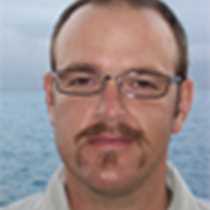Santa Cruz Island
It appears that we have changed not only islands but also planets as we arrive to Puerto Ayora on Santa Cruz Island (one of its many names acquired in its history). The waves from the Humboldt Current give us a vivacious evening and we find ourselves on the exposed southern coast of Santa Cruz. The contrast of the human culture and the previously visited wild islands is duly noted as we proceed to land at the Charles Darwin Station and the Galápagos National Park Center. Since the 60’s the two institutions have worked hard with international help to preserve the high level of biodiversity that the islands retain. Humans settling in the Galápagos over the past 200 years have tried (and failed in many cases) to colonize these “enchanted” islands, and we see before us a port town with 18,000 residents. The balance of education and participatory management within the local population helps to preserve the archipelago as residents ponder their place in this ecosystem. As we pass the recently hatched giant tortoises and we learn about the rearing in captivity program we are able to see pure conservation at its best as various tortoise populations are being saved. Certain island populations were not so lucky and Lonesome George is a testament to this as he is the last individual from Pinta Island. There are other positive stories though, such as the Española population that has been saved from only 15 tortoises that were not found by hungry sailors so long ago. Today Española has thousands of tortoises wandering on a highly pristine island as they continue on their evolutionary path. All are able to wander this small port and to interact with the Galapagueños as the locals are known. We continue to the highlands reaching lush cloud forest where we visit a lava tube and enjoy a hearty lunch.
The afternoon brings us even closer to the tortoises as we search for this species wandering the higher area of the island. Santa Cruz has one of the largest sub-species, and we come upon them feeding on the lush greenery without a care in the world. Among the tortoises that seem to be trapped in time we find vegetation that can only survive in the moist highlands. Darwin finches communicate in their high-pitched tones as they gather their daily sustenance and we are able to identify various species that Darwin himself was unaware of. Even though the highlands are lush with vegetation including a member of the sunflower family that towers 20-30 feet over our heads, we are able to make out the geological formations that formed this island. Giant pit craters that collapsed long ago show the internal plumbing of Santa Cruz and demonstrate the ever-changing world we live in. Content and surprised by the biodiversity we return to Puerto Ayora and have once again realized that we have come upon an island that is incredibly distinct from what we have seen or will be able to experience in the future.




